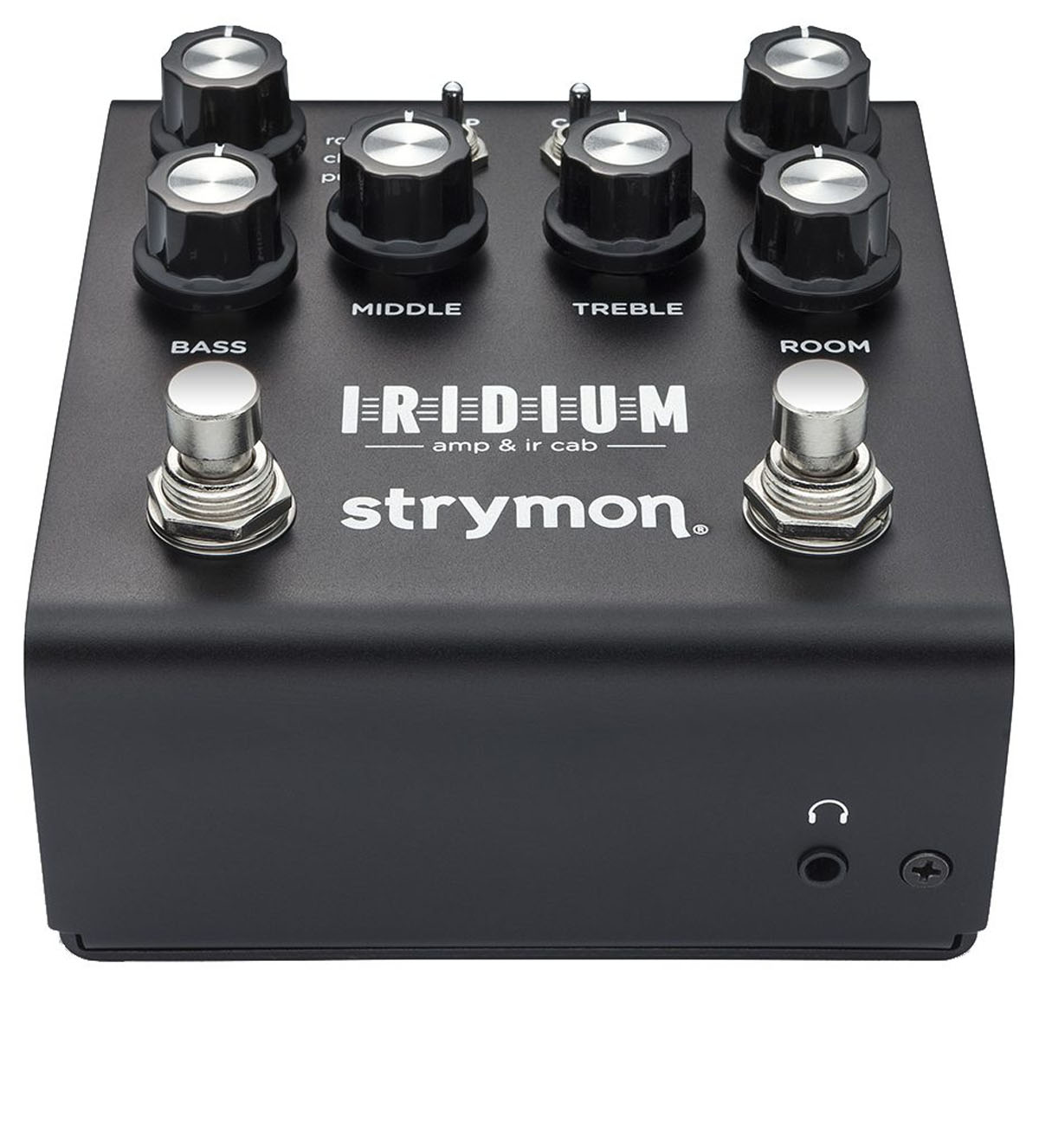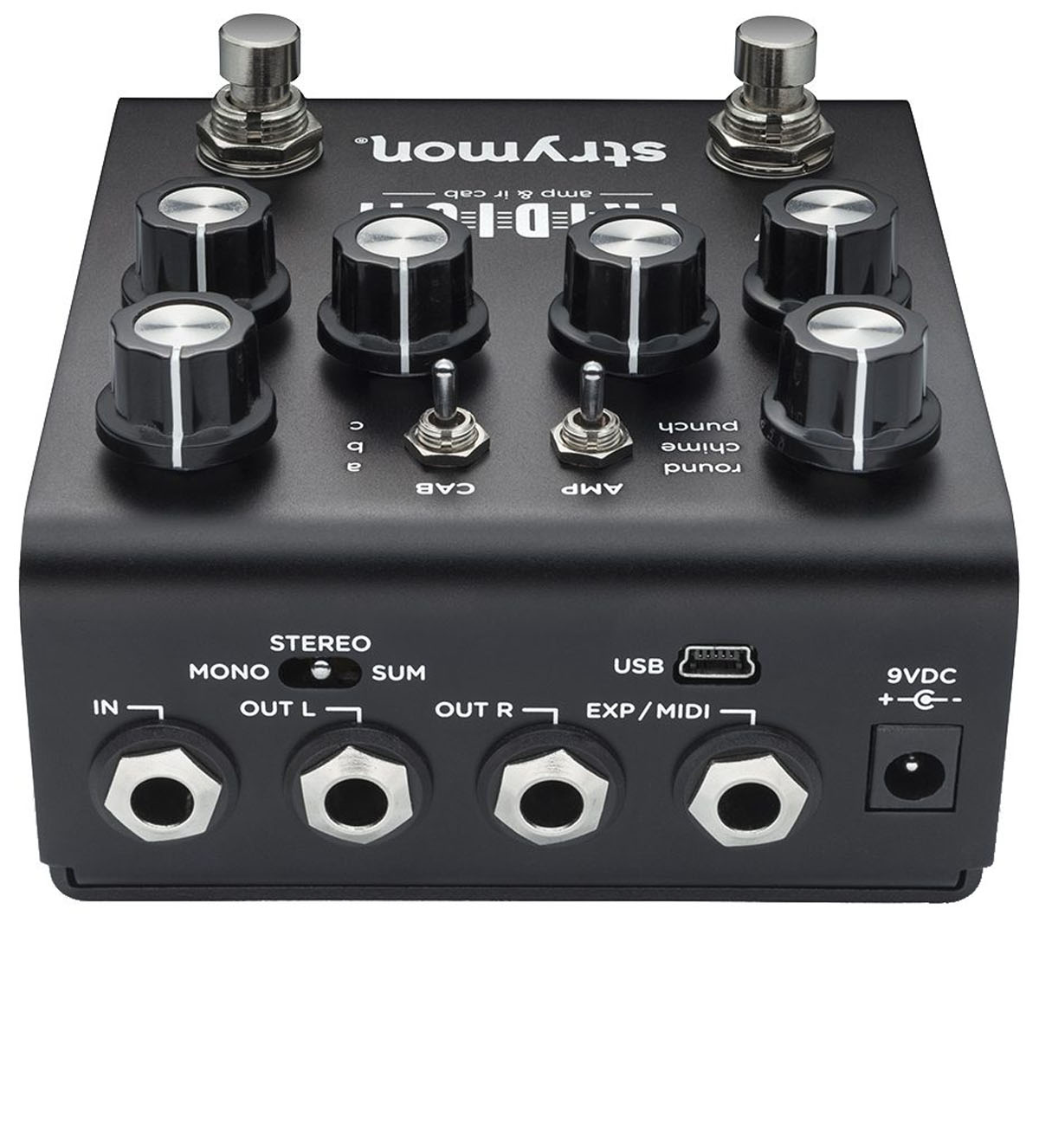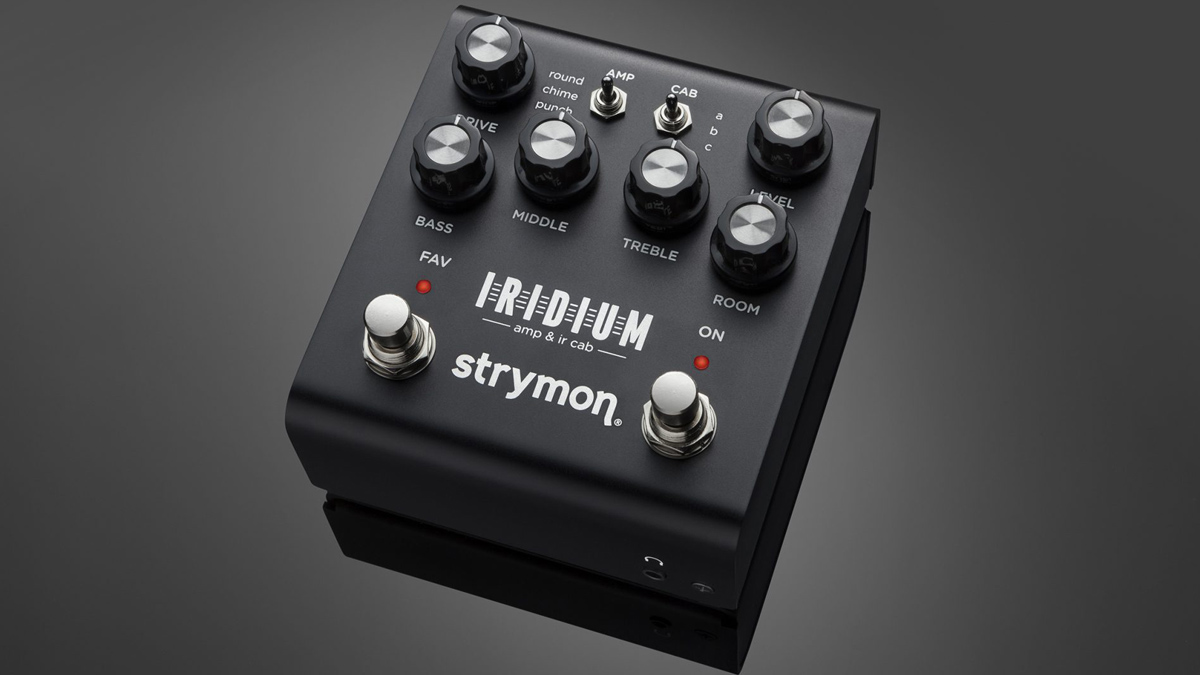MusicRadar Verdict
Awesome cab sims allied to great tones from three amp classics make the Iridium a hugely versatile and compact all-in-one rig for the stage or the studio.
Pros
- +
Excellent Vox, Fender and Marshall tones.
- +
Upload your own IRs.
- +
Incredible sense of space courtesy of its algorithmic reverb and 256ms of IRs from real physical spaces.
- +
MIDI control.
- +
The Favourite button allowing you to save your settings.
Cons
- -
The unit ships with a power supply but be aware that the Iridium draws 500mA so if planning to use your own, you might need to upgrade to a high-current adaptor.
MusicRadar's got your back
What is it?
The Strymon Iridium is not not your typical pedalboard favourite. Unlike its buddies down there by your foot, the Iridium is not designed to go into an amplifer – it is the amplifier. Oh, and it's a cab simulator with onboard reverb, too.
Of course, with it relatively compact size it will fit comfortably on your pedalboard alongside your usual complement of effects, but it can go direct to the p.a. when playing live or through the digital audio interface of your choice for recording. A headphone output facilitates silent practice.
The Strymon Iridium is really three amplifiers, each with drive and bass, middle and treble controls, and each with a choice of three Impulse Response cabinet sims. You can easily load your own onto the pedal via Strymon’s Impulse Manager software. Dial in some room reverb after that if you like. One really cool feature in the Iridium’s design is that its amp and cab modelling can work independently. You can shut off the amp and use another amp input to be run through its cab simulator, and vice-versa.
There are inputs for an expression pedal to control whichever parameter you’d like to control in real-time, while the whole unit can be controlled remotely by MIDI. Use MIDI and you can access up to 300 presets.

You can use the Iridium in a variety of mono and stereo applications. Being an amp, perhaps you would design your signal chain as you have it now, placing the Iridium at the end. But adding some delay or reverb after the Iridium would work well too. The architecture of the Iridium is digitial but perhaps the analogue JFET input helps give it a feel that is uncannily like an amplifier, reacting to your playing and which guitar you are using, and indeed to any adjustments to your volume control.
Performance and verdict
The Iridium’s three amp models are Round, Chime and Punch, and these are based respectively on Fender Deluxe, a Vox AC30 and a 100-watt Marshall Super Lead. In the secular context of guitar amplification, most might believe this to be a divine trinity, indeed.
Let’s look at the Round amp first. Here you can expect all those classic Fender cleans, which will break up nicely to that American drive tone that is so addictive, so musical, and the bedrock of so many great records. Adjusting the mids and you can get a number of Fender tones through the ages. As you dial more in you can go from a sort of bass and treble-forward voicings of the ‘black-panel’ era right through Tweed tones, and that characteristic drive.
Want all the hottest music and gear news, reviews, deals, features and more, direct to your inbox? Sign up here.
Adjusting the mids and you can get a number of Fender tones through the ages
If you want a traditional combo experience, the “A” cab sim will give you that 1x12 voicing. But experimenting brings some excellent results. The programmed C cab partnered the amp with a 2x10 cabinet which gives that wider tone and vibe, reminiscent of a Super or Vibroluxe. The cab simulation is of the highest quality; with is a 500ms IR housed in a pedal format, the Iridium is breaking new ground.
The Chime works much like an AC30’s Top Boost channel, with its mids control serving as the original amp’s Tone Cut, rolls off high-end on your command. Again, as with the Round amp, your choice of cab sim offers a great degree of versatility, with the Chime voiced to have a little bit more gain that the amp it is modelling.

As for Punch, well, you know what you are in for here – a total Marshall wallop with a classic Plexi midrage that could blacken your high. While there was plenty of cut in those amps, there wasn’t that much gain, and perhaps with one eye towards the contemporary player there is a little more juice as you turn the gain past two o’ clock.
Again, this is a pedalboard amp; it will happily take some gain in front of it. Just stack ‘em as you would with a regular amp. The reverb gives the Iridium a nice three-dimensional quality that serves each of its amp models well.
One of the strengths of the Iridium’s design is that it presents these amp models and cab sims with a mininum of fuss. The layout is reassuringly amp-like, unlikely to give anyone the heebie-geebies if using a modelling platform such as this for the first time.
You don’t even have to have it in a pedalboard. A table-top is just fine. Wherever. That’s the beauty of the Iridium. You can have the power of three classic Fender, Vox and Marshall amps, tweak their tones accordingly, and match them with a cab sim of your choice, in a small compact enclosure.
Need a new rig? Here’s one you can through in your backpack. It doesn’t get more portable.
Hands-on demos
That Pedal Show
Official demo video and tour
Pete Thorn
Premier Guitar
Specifications
- ORIGIN: USA
- TYPE: Amp modeller and IR cab pedal
- FEATURES: Selectable true or buffered bypass,
- AMPS: Fender Deluxe Reverb, Vox AC30TB, Marshall Plexi (Super Lead model number 1959)
- CABS: 1x12 Fender Deluxe Reverb, 1x12 Fender Blues Junior, 2x10 Fender Vibrolux, 2x12 Vox AC30-6 open back fawn, 1x12 Custom cab w/ Celestion Blue Alnico, 4x12 Mesa/Boogie Half-Back, 4x12 Marshall w/ Celestion G12M-25s, 2x12 Custom cab w/ Celestion Vintage 30s, 8x12 Marshall w/ Celestion T652s
- CONTROLS: Drive, Level, Bass, Middle, Treble, Room, Amp selector
- switch, Cab selector switch, Audio input selector switch, On footswitch, Favorite footswitch
- CONNECTIONS: Standard input, standard outputs (L, R), EXP/MIDI, USB, stereo mini-jack headphone ouput
- POWER: Supplied 9V DC adaptor, 500mA
- DIMENSIONS: 102 (w) x 114 (d) x 44mm (h)
- Strymon.net
MusicRadar is the number 1 website for music makers of all kinds, be they guitarists, drummers, keyboard players, djs or producers...
- GEAR: We help musicians find the best gear with top-ranking gear round-ups and high- quality, authoritative reviews by a wide team of highly experienced experts.
- TIPS: We also provide tuition, from bite-sized tips to advanced work-outs and guidance from recognised musicians and stars.
- STARS: We talk to musicians and stars about their creative processes, and the nuts and bolts of their gear and technique. We give fans an insight into the actual craft of music making that no other music website can.

